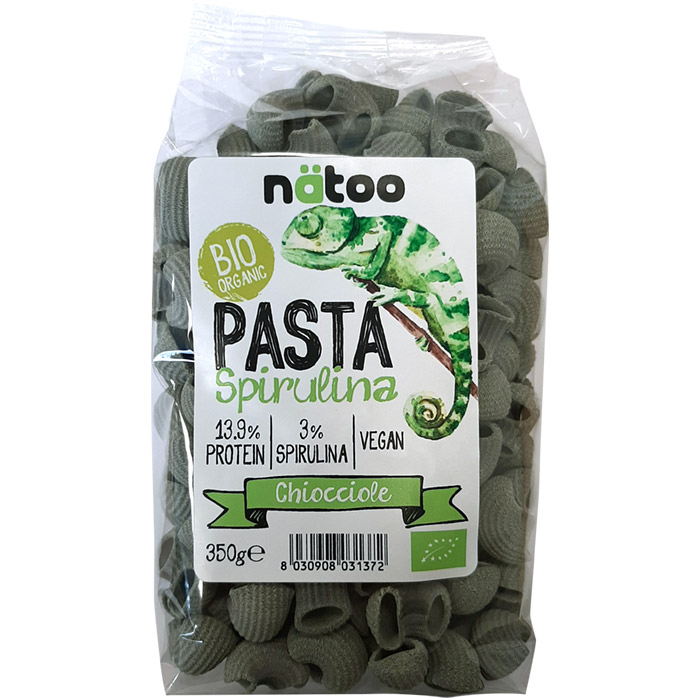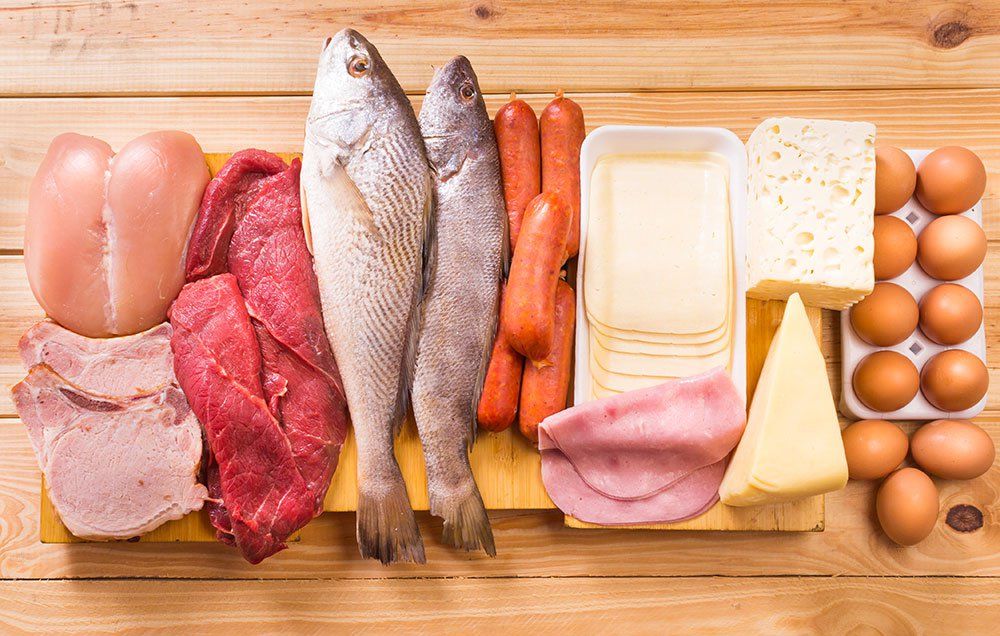Many animal protein alternatives are starting to appear in mainstream publications as artificial scarcity and shrinkflation begin to make dietary staples more unobtainable for the average Joe.
Much chatter surrounding the possibility of making bugmeal a “sustainable” replacement for meat has already enjoyed viral coverage — and much staunch resistance.
Soy protein is now a mainstay in Western diets, with many consumers blissfully unaware of their soy consumption.
Plant-based meat replacements are attempting to become synonymous with health, despite lacking the nutritional profile of meat and requiring multiple lab-produced ingredients to put together an inferior product.
But what protein alternatives are being conjured up in the underground?
Meat of The Future: Algae
Researchers at Flinders University in Australia claim that marine algae may provide a way to create sustainable ‘superfoods’ in the very near future. They claim to be responding to growing interest from consumers in environmentally friendly, sustainable and ‘ethical’ alternatives to traditional forms of animal protein.
Recently we reported that the British government’s National Food Strategy, which stopped short of suggesting a dreaded ‘meat tax’, nevertheless suggested that plant ‘meat’ and food produced by algae would have to be a central part of the British diet in the future if the country is to achieve ‘food security’.
Marine Algae: New Superfood?
Marine algae are single-cell organisms that use photosynthesis, like plants, to produce their energy. And according to Flinders University Professor Wei Zhang, they could be the solution to the world’s ‘meat protein shortage’.
“Our research spans the entire value chain, from microalgae cultivation and circular advanced biomanufacturing to the development of high-value functional food,” Professor Zhang says.
“Microalgae come in a diverse range of nutritional profiles and advanced cultivation strategies can be developed for tuning microalgae to produce protein-, oil- and carbohydrate-dominant types that can be processed into a broad range of functional foods, including healthy cell patties, chips, pastes, jams and even caviar.”

One of the most attractive aspects of cultivation of marine algae is that arable land isn’t required for their production, although they work in more or less the same way as traditional plant crops.
“They are therefore often called the rainforests of the oceans,” says Associate Professor Kirsten Heimann, senior lecturer in biotechnology at Flinders University.
“Using sunlight, photosynthetic microalgae create oxygen and convert carbon dioxide into organic carbon (protein, carbohydrates, pigments, fats, fibres, and micronutrients), just like plants, but do not require valuable arable land for their production. This means microalgae can be sustainably harvested and converted into eco-friendly superfoods.
“Putting one and one together, microalgae and innovative production and processing could help to service the world’s booming population and growing demand for sustainable protein production,” she says.
Professor Zhang is already leading a bid to establish a national Marine Bioproducts Cooperative Research Centre (MB-CRC) in Australia.
The CRC’s mission is to find ways to develop a “third generation” of Australian marine bioindustry. The first generation was fishing, the second “aquaculture” (the controlled “farming” of marine organisms). The aim is to transform Australia’s marine bioproducts sector into a globally competitive industry.
Microalgal products are already on the market; although most are from freshwater rather than marine algae. Two freshwater microalgal products currently on the market are the high protein Chlorella and Spirulina varieties used in the production of foods such as green pasta, drinks and beverages.

Marine species are of particular interest because they do not require scarce freshwater. Their nutritional profiles are also touted, such as their high DHA and EPA content (long chain omega 3 fatty acids), which are essential for infant and brain development and cardiac health.
It is also claimed that bioreactors for upscaling upscaled aquatic production of photosynthetic microalgae can help to combat greenhouse gas emissions and climate change. One 90 x 90 x 210 cm (3 x 3 x 7 ft) bioreactor unit can absorb up to 400 times more carbon dioxide than the same footprint of trees.
Along with research into processing techniques, the team by Professor Zhang is also investigating the use of waste or harvested seaweed for the production of biodegradable plastics. We’ve already talked in detail about the global plastic, especially microplastic, menace, which includes the transmission of hormone-disrupting chemicals (xenoestrogens).
Meat of The Future: Plastic
In a new breakthrough scientists have discovered how to create edible products from plastic. So will we be choosing to eat plastic in the coming years, or will we the choice be out of our hands?
Scientists Develop Edible Plastic Protein
Last week we reported on a shocking viral video which showed unwanted food – plastic wrapping and all – being ground up to make pig food. As a huge mass of plastic-covered food travelled up a conveyor and into a grinder, the cameraman could be heard laughing, “The hog eat it and then you eat the hog. HA HA HA HA!” Twitter users were quick to respond, either with incredulity at the absolute state of US agriculture or with sensible advice about how to avoid buying meat contaminated by plastic-laden feed.
Whether or not the wholesale addition of plastic to pig feed is actually permitted in the US – this may be an egregious instance – plastic is definitely finding its way into agricultural feed as a result of the disposal of unwanted food, as we went on to reveal in the article.
One user’s response to the shocking viral video
In the UK, for instance, nearly 700,000 tonnes of unused food – everything from loaves of bread to chocolate bars – are saved from landfill each year by being used as animal feed. Since the machinery that strips the food of its plastic packaging cannot remove all of it, tolerable limits on plastic content have to be set. That limit has been set at 0.15% by the UK Food Standards Agency.
But even if you can avoid ingesting plastic from contaminated meat, it’s looking increasingly likely that plastic will be on the menu in the near future, as scientists attempt to find ways to deal with the planet’s mounting plastic and food crises. Whether you’ll have a choice in eating them or not, however, remains to be seen.
We’ve already reported on scientific efforts to make a vanilla flavouring using recycled plastic bottles, and now German science and technology company Merck KGaA has awarded its 2021 Future Insight Prize last month to two researchers who have gone one further and developed a process for using microbes to turn plastic waste into protein.
“The winners of this year’s Future Insight Prize have created a ground-breaking technology with the potential to generate a safe and sustainable source of food while reducing the environmental harms associated with plastic waste and traditional agricultural methods,” Belén Garijo, chair of the executive board and CEO of Merck, said in an announcement. “We congratulate Ting Lu and Stephen Techtmann for their promising research, and hope that the Future Insight Prize will help to accelerate their efforts.”
This London insect farm is changing the way we eat | Pioneers for Our Planet – YouTube
Are you starting to notice any patterns yet?
Lu, professor of Bioengineering at the University of Illinois Urbana-Champaign, and Techtmann, associate professor of Biological Sciences at Michigan Technological University, began working on the idea in the autumn of last year at their separate institutions. Their project began in response to a call from funding-body the Defense Advanced Research Projects Agency (DARPA) for “interesting and creative ways to deal with wastes,” according to Techtmann.
In basic terms, the process that the researchers came up with begins by using chemicals to break down plastic polymers and then uses naturally occurring microbes to convert the plastic building blocks into a form of “microbial biomass” or “microbial cells” that have nutritional value.

These cells currently take the form of a powder that could itself be a food product, or could be used to make energy bars or other types of food product.
Although the beginning and the end products might seem like “radically different” materials, the researchers point out that, from a chemical perspective, they are not as different as one might expect. Carbon, oxygen and hydrogen are the essential components or building blocks of both plastic and food.
At present, the technology is currently being used on a very small scale, converting up to 50 grams of plastic at a time. However, the technology looks to be scalable, and is reported to be highly efficient, and is able to change 75% to 90% of HDPE plastics into potentially edible cells.
The researchers state that their short-term goals include creating a device that can be used for disaster relief, when food and clean water are often in short supply, but in the longer term they believe the technology could be used on a large enough scale to help solve “both plastic pollution and food insecurity, two grand challenges of our modern society”, as Lu puts it.
As well as being an alternative food source for humans, the researchers also believe it could just as easily be fed to livestock and pets.
Readers are likely to ask, though, whether such ersatz foodstuffs will remain a consumer choice in future years, or whether they will be forced on consumers, either through legislation or artificial scarcity, as an alternative to traditional foodstuffs, especially meat and animal-products.
As we wrote in a recent article on the British government’s new National Food Strategy, a wide-ranging evaluation of the United Kingdom’s “food security” in the wake of the decision to leave the European Union, in 2016, “the age of dietary choice may very swiftly be coming to an end.”
At the governmental level, this is signalled by the looming threat of “meat taxes” – narrowly avoided in the National Food Strategy’s final report, but still a future possibility – and an increasing recognition among legislators that people cannot be allowed to continue to consume meat at anything near present levels.
Christopher Snowdon’s appearance on GB News alerted many for the first time to the possibility that the government might legislate to prevent them from eating meat
Christopher Snowdon, a journalist who heads the Lifestyle Economics unit at London’s Institute of Economic Affairs, even went so far as to say, during a televised interview, that “the political reality is that Boris Johnson is going to have to stop advising people to fly less and eat less red meat and find ways of forcing people.”
At the commercial level, companies such as Oatly and other plant-based brands are resorting to increasingly manipulative tactics to shame consumers into stopping buying animal-based food products. In doing so, they are bolstered by scientific research which shows that claims about the taste and health benefits of plant-based animal-product alternatives fall flat with consumers, and that ‘social pressure’ is a much more effective way to get them to give up their favourite foods.
Oatly’s “Help Dad” campaign is a particularly unsavoury example of this new shame-based advertising, featuring ‘woke’ teenagers berating their ‘unenlightened’ fathers for wanting to drink cow’s milk instead of a ‘milk’ slurry of oats, sugar and vegetable oil, which we’ve called ‘one of the worst things you can eat.’

In the middle of all this, too, is an entire ecosystem of commentators and academics helping to inflame sentiments against meat and animal products.
One of the more bizarre examples is S. Matthew Liao, an NYU ‘bioethicist’ who has made claims that people should have their genes altered to make them allergic to red meat and that they should also be shrunk by around 25% to reduce their carbon footprint. Seriously: we’ve written an article on him and his sinister vision of the future.
All in all, it seems like the odds are stacked against lovers of meat and animal products, despite the wealth of evidence that plant-based products provide inferior nutrition, as well as being nowhere near as good for the environment as advocates claim. Consider for instance this admission by a leading food scientist that plant-based meat alternatives are just a form of unhealthy processed food, or a near-global study from 2017 that showed consumption of meat and animal products is the reason Europeans are the tallest people in the world.
Surveys like the Australian survey mentioned above indicate that direct legislation against consumption of meat and animal products is likely to encounter serious resistance. But will it be enough? Only time will tell.
Synthetic Protein
Researchers at the McKelvey School of Engineering at Washington University in St. Louis have developed a new approach to produce synthetic protein which can then be used to make clothing. Microbes were modified to produce the high molecular weight muscle protein, titin, which was then spun into fibers.
According to the researchers, the synthetic protein is “cheap and scalable. It may enable many applications that people had previously thought about, but with natural muscle fibers.” The new synthetic protein could be particularly attractive to vegans, because it requires no actual animal tissues to produce.
Synthetic Protein: A New Frontier in Clothing – and Beyond?

The synthetic protein produced in the experiment lab is titin, which is one of the three major protein components of muscle tissue. One of the most important characteristics is its heavy molecular weight. In fact, titin is the “largest known protein in nature”.
Researchers have been interested in developing materials that resemble muscle fibers for some time, for use in applications like soft robotics.
“We wondered, ‘Why don’t we just directly make synthetic muscles?’” Fuzhong Zhang, one of the principal researchers, said. “But we’re not going to harvest them from animals, we’ll use microbes to do it.”
To get around some of the issues that typically prevent bacteria from producing large proteins like titin, the research team genetically engineered bacteria to piece together smaller segments of protein into heavier polymers.
The researchers then used a wet-spinning process to convert the proteins into fibers that were around a tenth the thickness of human hair.
The group then analyzed the structure of these fibers to identify the molecular mechanisms that enable them to display their exceptional toughness, strength, and damping capacity (i.e. the ability to dissipate mechanical energy as heat).
The material produced is tougher than the kevlar used in bulletproof vests, but could have applications well beyond self-protection. It could even have biomedical applications, since it is more or less identical to the protein found in human muscle fibres. The material could be used to make sutures or for tissue engineering.
The research team have already filed a patent application based on the research.
“The beauty of the system is that it’s really a platform that can be applied anywhere,” said one of the researchers. “We can take proteins from different natural contexts, then put them into this platform for polymerization and create larger, longer proteins for various material applications with a greater sustainability.”
Yesterday, we reported on another amazing discovery. Scientists at the University of Illinois at Urbana-Champaign discovered that dileucine, a branched-chain amino acid, can increase muscle growth by 42%.
This is a significant boost that compares favourably with the protein-building boost that comes from exercise.
“To put that in perspective, exercise alone can cause a 100-150% increase in the muscle-building response,” one of the principal researchers said.
Start-up Ingenious Ingredients has already filed a patent for dileucine as a supplement, with further American and international patents pending.
While the primary market for dileucine supplements might appear to be young men interested in building muscle, Ingenious Ingredients plants to target other demographics that might be in need of a muscle-building boost, such as the elderly and ‘populations that have an overall negative nitrogen balance, meaning they are losing muscle mass, eg. during calorie restriction, during immobilization or hospitalization (muscle disuse atrophy),” according to Ingenious founder Dr Ralf Jaeger.

Don’t hesitate to email us at [email protected] for personalized coaching and a client questionnaire if you’d like DEDICATED tailor-made personal training on strength training, building muscle, losing fat, developing athleticism, and more — all to your liking, lifestyle, habits, and taste!
Otherwise, don’t forget to claim your FREE eBook detailing how to lose 20lb of fat while building muscle in 12 weeks! You can claim it here.
Alternatively, you can pick up a FREE eBook on fundamental strength principles offering an introductory workout program.











